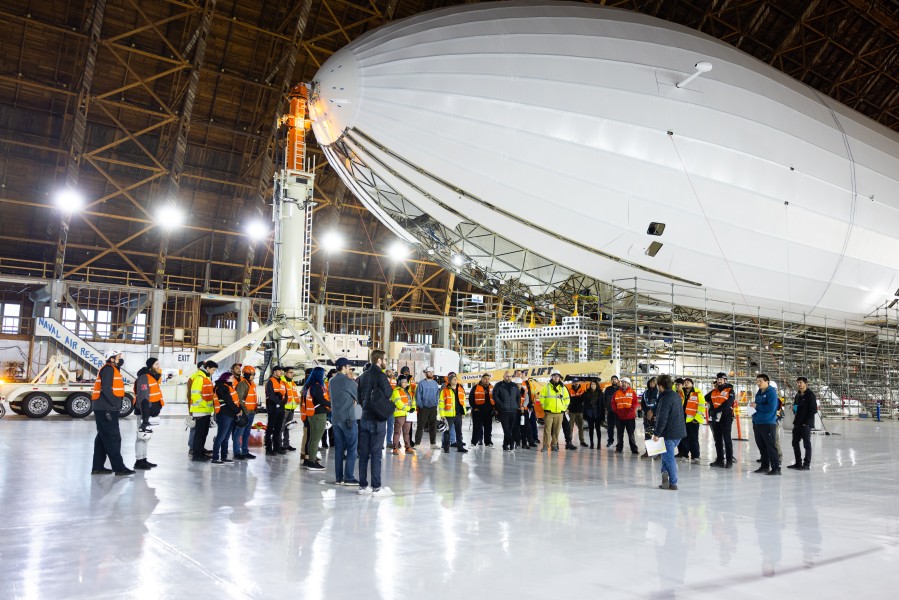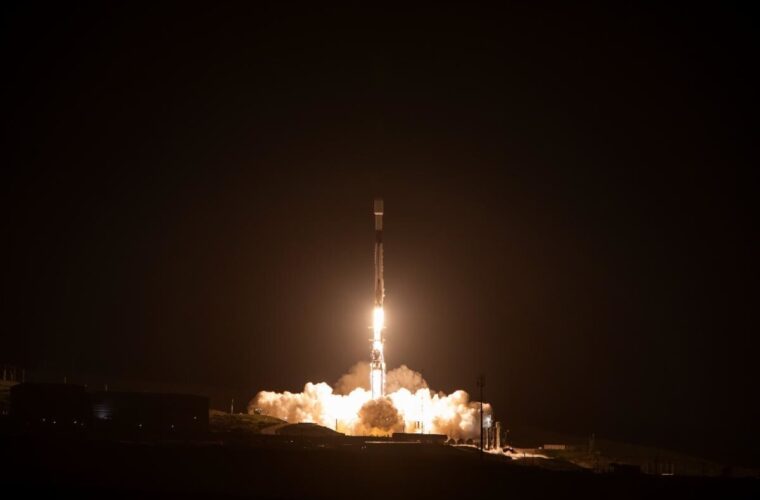Pathfinder 1, Sergei Brin’s electric airship is about to take off
Huge and lighter than a plane, the aircraft aims to deliver humanitarian aid wherever needed. Waymo, Verily, Sidewalk, Calico, X (not the former Twitter) and many others were projects kept secret for a long time before going public. What they have in common is their aspiration to change their respective industries and improve human life. The second thing they have in common is that they are companies that originated within Google, specifically at the behest of the two creators of the search engine, Sergei Brin and Larry Page. Adding to the list is Lighter Than Air, known as LTA, a company founded in 2015 by Brin to develop airships for transporting people and goods. It has become popular recently as it has received authorisation to start flight tests of Pathfinder 1, a gigantic aircraft that could prove very useful in emergencies.
Pathfinder 1: A new chapter for airships
Before we find out why the impact of the airship makes the project so significant, we need to understand what Pathfinder 1 is and why it was made. The history of airships was short (from 1929 to 1937), with the final stop decreed after the accident of the Zeppelin-produced Hindenburg, which caught fire on 6 May 1937, killing 30 of the 97 people on board. In its shape and characteristics, the airship remains an ideal means of transport in certain conditions, not least because it does not require runways or roads.
These advantages tickled Brin, convincing him to invest resources in developing innovative models. ‘We believe that lighter-than-air technology can accelerate humanitarian aid by reaching remote locations with little infrastructure and reduce carbon emissions for air and cargo transport,’ Alan Weston previously told the Financial Times. An aeronautics expert and former NASA executive, Weston was named by Brin to lead LTA Research with the goal of building aircraft capable of delivering humanitarian aid during emergencies and natural disasters.



How Pathfinder 1 is made
Supporting this prospect are concrete factors because when the runway of an airport is out of use, roads and ports are damaged and therefore not usable, the airship could be the means capable of reaching where no one else could. Hence, the possible impact of LTA craft on remote areas and communities with no connections and supplies. Pathfinder 1’s mission is to deliver food, medicine and other necessities wherever needed, with the ability to carry a load of around 200 tonnes. Although only publicly released a week ago, the US company received an airworthiness certificate from the Federal Aviation Administration on 6 September, allowing it to begin flight tests, with a plan to fly 25 low-flying flights for 50 hours.
The tests are expected to be completed within six months. They will be carried out at Moffett Field, NASA’s airport in the Bay Arena, and Palo Alto Airport at an altitude of 460 metres without disturbing the manoeuvres of aircraft arriving and departing from the commercial airports of San Francisco and San Jose.
A glimpse into the future of Hybrid Airships
Pathfinder 1 immediately impresses the eye, as it is 124 metres long and 20 metres wide but weighs less than an aeroplane. Equipped with 12 electric motors and a hybrid propulsion system that follows the pattern of electric cars, it uses two diesel engines of 150 kW each. It generates electricity stored in 24 batteries, which are then used to power the electric motors. A way to minimise the use of diesel and have less impact on the environment.
LTA and Brin originally wanted to go for hydrogen. Still, the Federal Aviation Administration only allows non-flammable lifting gases for airships, so helium was chosen, which is much cheaper to fill the 13 huge tanks wrapped in Tediar. This fireproof synthetic fibre covers the entire outer surface of the airship. At the model’s base are 13 skeletons, each with 96 titanium nodes and 288 carbon fibre tubes.


The first step of a long journey
Lidar sensors integrated into the Fly-by-Wire flight system allow the pilot to know in real time the amount of helium available in the tanks, while the twelve propellers on the sides and rear of the craft can rotate 360 degrees to facilitate position control. Able to withstand winds of up to 60 knots (about 110 km/h) and travel at a maximum speed of 120 km/h, Pathfinder 1 can accommodate 14 people and according to sources inside the company is a roughly $250 million project (Brin’s fortune is around $106 billion).
Despite the extraordinary numbers, the aircraft represents only a first step in Brin’s mind, since after flight tests are completed, the airship will be moved to a former Goodyear hangar in Akron, Ohio, where LTA has acquired space to house a 300-metre-long aircraft. This is not a quirk of grandeur, as the company has already started work on Pathfinder 3, an airship that will be 180 metres long.



